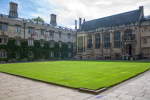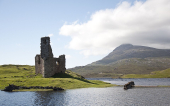UK News
-
 Reform UK accepts £36,000 donation from Heathrow amid net zero backlash
Reform UK has received a £36,000 political donation from Heathrow Airport Holdings Ltd, according to the latest records published by the Electoral Commission.Read More...
Reform UK accepts £36,000 donation from Heathrow amid net zero backlash
Reform UK has received a £36,000 political donation from Heathrow Airport Holdings Ltd, according to the latest records published by the Electoral Commission.Read More... -
 Majority of TfL services to run over Christmas and New Year
Transport for London (TfL) has confirmed that most of its services will operate throughout the festive period, from Saturday 20 December 2025 to Monday 5 JanuaryRead More...
Majority of TfL services to run over Christmas and New Year
Transport for London (TfL) has confirmed that most of its services will operate throughout the festive period, from Saturday 20 December 2025 to Monday 5 JanuaryRead More... -
 MPs launch inquiry into UK’s international climate finance
MPs have opened a major inquiry into how effectively the UK is funding climate action overseas, amid growing concerns over transparency, value for money and theRead More...
MPs launch inquiry into UK’s international climate finance
MPs have opened a major inquiry into how effectively the UK is funding climate action overseas, amid growing concerns over transparency, value for money and theRead More... -
 Cardiff Central set for major overhaul after £77.8m government approval
Cardiff Central Station, the busiest rail hub in Wales, is set for a major transformation after the UK government gave final approval to a £77.8 millionRead More...
Cardiff Central set for major overhaul after £77.8m government approval
Cardiff Central Station, the busiest rail hub in Wales, is set for a major transformation after the UK government gave final approval to a £77.8 millionRead More... -
 Tesla’s UK car sales slide 19% in November as competition intensifies
Tesla’s UK car registrations fell sharply in November, declining 19% year-on-year, according to preliminary data released on Thursday by research group New AutoMotive.Read More...
Tesla’s UK car sales slide 19% in November as competition intensifies
Tesla’s UK car registrations fell sharply in November, declining 19% year-on-year, according to preliminary data released on Thursday by research group New AutoMotive.Read More...

Culture
-
 OUP India launches 100 libraries for underprivileged children across Uttar Pradesh
Oxford University Press (OUP) India has partnered with the National Book Trust (NBT) to establish 100 libraries for underprivileged children across Anganwadi centres inRead More...
OUP India launches 100 libraries for underprivileged children across Uttar Pradesh
Oxford University Press (OUP) India has partnered with the National Book Trust (NBT) to establish 100 libraries for underprivileged children across Anganwadi centres inRead More... -
 Children’s author Iryna Kotlyarevska: “Stories born from family evenings”
Iryna Kotlyarevska is a name increasingly found on the shelves of family libraries. A mother of four, a Bachelor of Philosophy, a Master of Political Science, and the creator of the worlds ofRead More...
Children’s author Iryna Kotlyarevska: “Stories born from family evenings”
Iryna Kotlyarevska is a name increasingly found on the shelves of family libraries. A mother of four, a Bachelor of Philosophy, a Master of Political Science, and the creator of the worlds ofRead More... -
 Ashmolean Museum passes one million visitors for first time since 2008
The Ashmolean Museum in Oxford has recorded more than one million visitors in a single year, the first time it has reached the milestone in 16 years, the institutionRead More...
Ashmolean Museum passes one million visitors for first time since 2008
The Ashmolean Museum in Oxford has recorded more than one million visitors in a single year, the first time it has reached the milestone in 16 years, the institutionRead More... -
 Writer’s Award 2026 honours Jacqueline Crooks and Vanessa Londoño
Jacqueline Crooks and Vanessa Londoño have been named the 2026 recipients of the Eccles Institute and Hay Festival Global Writer’s Award. The announcement was made Monday evening atRead More...
Writer’s Award 2026 honours Jacqueline Crooks and Vanessa Londoño
Jacqueline Crooks and Vanessa Londoño have been named the 2026 recipients of the Eccles Institute and Hay Festival Global Writer’s Award. The announcement was made Monday evening atRead More... -
 At Britain’s first plant-based Michelin-Star restaurant, most diners aren’t vegan
At Plates, the first fully plant-based restaurant in Britain to earn a Michelin star, the dining room is full most nights — yet the vast majority of guests aren’t vegan.Read More...
At Britain’s first plant-based Michelin-Star restaurant, most diners aren’t vegan
At Plates, the first fully plant-based restaurant in Britain to earn a Michelin star, the dining room is full most nights — yet the vast majority of guests aren’t vegan.Read More... -
 Sally Rooney warns UK readers may lose access to her books amid Palestine Action ban
Irish novelist Sally Rooney has told the High Court she may be forced to halt publication of her books in the UK — and potentially withdraw existing titles —Read More...
Sally Rooney warns UK readers may lose access to her books amid Palestine Action ban
Irish novelist Sally Rooney has told the High Court she may be forced to halt publication of her books in the UK — and potentially withdraw existing titles —Read More... -
 Cambridge Dictionary reveals ‘Parasocial’ as Word of the Year 2025
Cambridge Dictionary has selected “parasocial” as its Word of the Year for 2025, highlighting the growing public fascination with one-sided relationshipsRead More...
Cambridge Dictionary reveals ‘Parasocial’ as Word of the Year 2025
Cambridge Dictionary has selected “parasocial” as its Word of the Year for 2025, highlighting the growing public fascination with one-sided relationshipsRead More... -
 ‘Banksy’s ‘Girl with Balloon’ was stolen from my gallery – London is not safe for art’
The head of a central London gallery says he has abandoned his Fitzrovia exhibition space after a £270,000 Banksy print was stolen in a brazen smash-and-grab raid.Read More...
‘Banksy’s ‘Girl with Balloon’ was stolen from my gallery – London is not safe for art’
The head of a central London gallery says he has abandoned his Fitzrovia exhibition space after a £270,000 Banksy print was stolen in a brazen smash-and-grab raid.Read More... -
 London Art Fair to return in January 2026 with expanded global line-up
The London Art Fair will return to the capital from 21–25 January 2026, marking its 38th edition with an expanded roster of Modern and Contemporary galleries from the UK and abroad.Read More...
London Art Fair to return in January 2026 with expanded global line-up
The London Art Fair will return to the capital from 21–25 January 2026, marking its 38th edition with an expanded roster of Modern and Contemporary galleries from the UK and abroad.Read More... -
 Gold pocket watch owned by Titanic couple could fetch £800,000 at auction
A gold pocket watch recovered from Isidor and Ida Straus — the elderly couple immortalised in the 1997 film Titanic — is expected to sell for at least £800,000 when it goes under the hammerRead More...
Gold pocket watch owned by Titanic couple could fetch £800,000 at auction
A gold pocket watch recovered from Isidor and Ida Straus — the elderly couple immortalised in the 1997 film Titanic — is expected to sell for at least £800,000 when it goes under the hammerRead More...

British Queen celebrates
Most Read
- Teen held after US woman killed in London stabbings
- Heave-ho Harry! Prince prepares to join the walking wounded in ice trek to North Pole
- Football: Farhad Moshiri adamant Everton deal above board
- "Master of English Style". Interview with Designer Lydia Dart
- Letter to the Financial Times from Lord Mayor Alderman Michael Bear
World News

On 29 March 2022, the European Commission carried out unannounced inspections at the premises of several companies in Germany active in the supply, transmission

The UK’s Defence Contribution in the High North outlines plans to protect critical underwater national infrastructure and ensure freedom of navigation through international seas and Exclusive

The Prime Minister will announce a major new package of support for Ukraine today at the NATO and G7 leaders’ meetings, as he calls on the international community

The Mayor of London will lead a march of thousands of Londoners and visitors to the capital this Saturday to send a message of solidarity to the people of Ukraine, as Ukrainian President

- UK at forefront of humanitarian response with 3.7 million medical donations to Ukraine

The Prime Minister will meet leaders in Abu Dhabi and Riyadh today [Wednesday 16th] for talks on energy, regional security and humanitarian relief, as he galvanises global action on the crisis

The Band of the Coldstream Guards and a Piper from 1st Battalion Scots Guards provided music for the service at the Commonwealth Memorial Gates service, while the State Trumpeters of

The Mayor of London, Sadiq Khan is demanding ministers take sanctioning Russian oligarchs seriously by moving immediately to seize assets that can then be sold to fund aid to Ukraine.

Quebec-based AMD Medicom Inc. ("Medicom"), one of the world's leading manufacturers of N95 respirators and medical grade surgical masks, joins the

The Mayor of London, Sadiq Khan has reiterated that London stands shoulder to shoulder with the people of Ukraine as President Putin’s war of aggression enters its second week. Today the






















